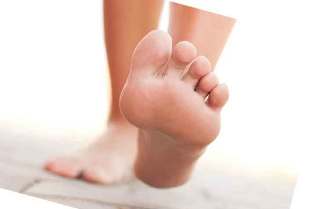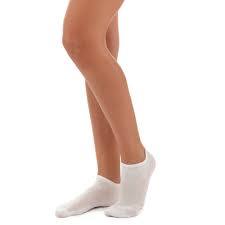Palmar-plantar psoriasis affects the palms of the hands and on the soles of the feet, and the disease itself is a pathological autoimmune condition.

Psoriasis on the palms of the hands and soles of the feet, along with the localization process of the scalp, is considered to be one of the most common forms of the disease. Represents about 14% of the cases the pathological state of the skin.
The reasons for the development of the disease
Although Palmar-plantar forms of psoriasis is not peculiar to the binding of age in the period from 15 to 35 years, there was a higher rate of development of the disease. There is, and the relationship with ethnicity. It is reported that the individuals of caucasian nationality with age above 50 years of age significantly increases the risk of the development of this pathology.
The exact causes of the pathological state up to the end has not been clarified and still believes that the disease is the autoimmune process. During normal operation, the immunity of a person receives the protection of a wide variety of alien agents: viruses, allergens, protozoa, and other microorganisms.
When psoriasis occurs a failure in the body, after which the immune system begins to produce substances hard against its own cells and tissues. An excessive number of T-lymphocytes (cells of immunity) and macrophages leads to the development of the inflammatory response and the excessive proliferation of skin cells, therefore, can occur typical symptoms and the appearance of hyperkeratosis.
Note! Hyperkeratosis is an excessive thickening of the epidermis — the outer layer of the skin.
Some studies point to a small role of the factor of heredity. For example, about 10% of the population inherit the genes associated with psoriasis and only 3% of them develops the disease. Such statistics suggest about the availability of other, more extensive causes of the disease.
Additional risk factors are:
- The stress and emotional lability (sensitivity).
- Smoking and consuming drugs.
- Background of the diseases that affect immunity.
- Infections, trauma, and frequent cuts on the palms of the hands and soles of the feet.
In a 2006 study has been said about the relationship dermatological pathology of diseases of the cardiovascular system and other maladies: hypertension, diabetes and hyperlipidemia.
The results of the experiences were not clear. For the full understanding of all the processes, the study of this topic continues and more studies are needed.
Triggers of the disease (factors that affect the pathology, but not leading to it directly) can be the following:
- Sunburn;
- Insect bites;
- Exposure to allergens;
- General bacterial infections, such as pneumonia, or angina;
- Viral diseases, including HIV infection;
- Inflammatory conditions of various degrees of severity: bronchitis, nasopharyngitis;
- Heavy alcohol intoxication;
- Obesity.
Diagnosis Palmar-plantar psoriasis

Despite the rapid development of modern medicine, the establishment of psoriasis on palms, maybe by visual inspection keychain doctor without special equipment. Is based on physical examination in "psoriatic triad of the divine", the demonstrations that occur easy shave with flaking of the affected areas of the body.
The doctor draws attention to the history of the disease, as well as some are constantly taken medications may be triggers for the development of the disease:
- Indomethacin and other non-steroidal anti-inflammatory drugs (NSAIDS);
- Li and antimalarial drugs;
- The strong policy of corticosteroids;
- The reception of penicillin, hydroxychloroquine.
In strange cases, it is recommended that a comprehensive examination, which includes laboratory analysis of blood and scan, ultra-sound, as well as the exception of fungal infection using mycological diagnostic. When the testimony held biopsy dubious home the skin of the integument.
The symptoms and the first signs of Palmar-plantar psoriasis
Among the main types of the disease has five variations. In 90% of cases can occur the visual feature of the clinical picture.
As it seems Palmar-plantar psoriasis? The patient has on the palms of the hands and soles of the feet are defined psoriatic plaque red, scaly patches on the skin thickened, prone to flaking. In homes, the person feels itching, heat and pain of variable intensity; in some cases, general features crack and bleed.
Provided for the purpose and in the formation of nails:
- Nail plates may appear defects, holes;
- The nail thickens and discolored;
- Change shape.
Palmar-plantar type of disease occurs as part of a common process, but is limited only to the skin of the hands and feet. Psoriasis of the soles makes it difficult to walk and wearing shoes. Damage in their hands can not only interfere with the performance of any type of work, but, in addition to imposing a mark in the negative in the relationship with people. Common situations, such as the welcome hand, can be tragic, which leads to confusion and social anxiety of a man to the development of social phobia.
A distinctive feature of this form of the disease is the presence of species of the process, which can be the following terms:
- Palmar-plantar pustular psoriasis Barbera;
- Purulent psoriasis;
- Pustular dermatitis.
Listed disorder of the skin covering the cause for the formation of clusters (agglomerates) of different pustules in the area of the plates. In general, this type of rash is very similar to normal acne. It is worth mentioning that this type of disease quite firmly, transfer easy methods of treatment and, many times, requires an integrated approach to the course of the therapy.
Pay attention! Pustular psoriasis of the palms of the hands and soles requires treatment anti-bacterial drugs, when you join a bacterial infection.
The phase of Palmar-plantar psoriasis

As and when all the forms of the pathological process, Palmar-plantar is the location is characterized by three stages clinical:
- The initial phase. The appearance of eruptions on the hands and feet. The plates have the characteristic of a red tone, can be observed whitish purulent inclusion; patient preoccupied with intense itching. Elements of the rash merge into large pockets. Their number depends on the individual characteristics of the disease.
- Phase stabilization. The state does not progress, the new pathological elements not formed, but the age still intact. Itching gradually decrease, and the coloring of the plates becomes less bright.
- In the final phase. Accompanied by experienced setbacks elements, pruritus is absent. The treatment becomes support or excluded, does not; it provides recommendations for the conservation of remission and prevention of relapse.
In some cases, the disease is classified into elements of eruptions:
- The usual way — a typical manifestation in the skin;
- Cornea shape accompanied by hyperkeratosis, and characteristic red spots little, or they are missing;
- Form-Barbera.
Methods of treatment
Palmar — plantar psoriasis is a chronic disease that can appear again, independent of the treatment. However, there are methods of therapy, to achieve the reduction of time of worsening and lengthening the period of remission.
The main treatment is the attempt to avoid the explosive growth of the cellular elements that lead to the development of plates is carried out anti-inflammatory therapy. The alternative technique offers the immediate removal of the scales.
As the curtains of skin on the palms of the hands and soles of thickened even in healthy people, the treatment of this location, often involves the combination of methodologies and more aggressive, the impact on the foci.
In the first place, when the psoriasis of the palms of the hands and the soles is assigned to a local treatment in the form of gels, ointments and creams:
- Analogues of the vitamin D;
- Based ointments corticosteroids;
- The retinoids;
- Anthralin;
- Special resin;
- The salicylic acid;
- Moisturizers to reduce the swelling and relieve the inflammation.
Conventional, the side effects are irritation, drying and thinning of the skin integument. In addition, sessions can be held phototherapy:
- Natural ultraviolet radiation from the sun;
- Artificial ultraviolet radiation with the ease of listening;
- Excimer laser;
- Photochemotherapy.
It is important to know!It is very important to a smooth transition and natural phototherapy. It is recommended to start with 5 to 10 minutes under the direct sun per day. Then, you can gradually increase the exposure time of 30 seconds per day.
Medicines for the treatment of Palmar-plantar psoriasis
Palmar-plantar psoriasis includes treatment with oral drugs is a more severe disease:
- Methotrexate;
- The retinoids;
- Cyclosporin;
- Biological, medicines that reduce the activity of the immune system;
- Thioguanine;
- Hydroxyurea.
The most frequent side effect of such medicines are problems with the gastrointestinal tract.
The course of the disease and the prevention
A serious illness, to a certain extent, can influence the development of severe of the state, threatening the health and life of a patient: 58% increases the risk of developing myocardial infarction and 43% — stroke. The main immediate complications of psoriasis of the palms and soles is the psoriatic arthritis, and dystrophy of the nails.
National center of medical research called for a series of diseases, which may depend on the pathology of the skin:
- An attendant of an autoimmune condition: Crohn's disease, celiac disease, sarcoidosis, and others;
- Eye diseases: cataracts and glaucoma, and infectious processes;
- Increase in blood pressure;
- Parkinson's Disease;
- Diabetes mellitus;
- Diseases of the liver and of the kidneys;
- Osteoporosis;
- Depression.
In a note.When appropriate treatment and compliance with the necessary guidelines, possible recurrences of the psoriasis can reduce, and the uncomplicated skin manifestations minimize.
Recommended prevention measures:

- Take daily baths with natural oils, salts and mild soap, do not contain artificial flavorings and dyes;
- Use moisturizing cream to the skin (in severe cases— twice a day), especially after receiving water treatments. It is not allowed to use hard towels. Just touch the skin with a soft, dry cloth, and then use a cream;
- Get sufficient amount of sunlight. You should consult with your physician and choose the "medium term". Very weak insolation will not produce a noticeable effect, and very intense — and will increase the risk of developing skin cancer;
- Avoid triggers, such as smoking, use of alcoholic beverages, stress, and infections;
- Use the aloe juice. You must run lotions the damaged areas of the skin several times a day. There are formal studies to prove the effectiveness of this plant to combat the inflammatory processes of the skin;
- Get at least three grams of omega-3 fatty acids per day. Include in the diet of fish, walnuts, flaxseed oil, or use fish-oil capsules. The fatty acids help reduce inflammation in the body;
- Help to make certain special additives based in barberry, tea tree oil or Dead sea salt.























